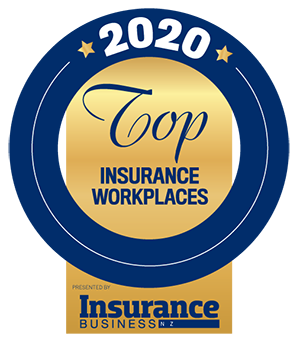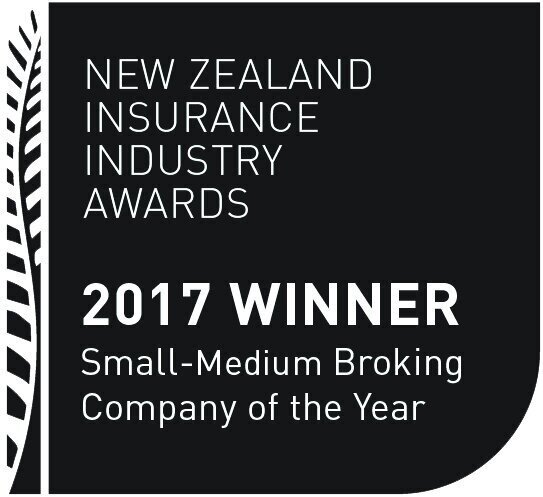Understanding Business Interruption Insurance
A GUIDE FOR the agricultural sector
Business Interruption (BI) Insurance differs from most other insurance policies in that it is a consequential loss policy. This means that it only kicks in after your business has suffered an insured material damage loss.
WHEN CAN I CLAIM FOR AN INTERRUPTION LOSS?
You can only claim following damage-causing events, such as flood, storm, fire, or earthquake, which are covered by your material damage or farm assets policy. Such a claim will then trigger the ability to claim under the business interruption policy. So an interruption such as Covid-19 lockdown is not a claimable event, as there is no related asset loss. However, while cover extensions are available, and some policies do cover prevention of access, pandemic cover was extremely rare in NZ prior to COVID, and is now impossible to get.
Most interruption policies do however have special additions to the cover (known as automatic policy extensions) that specifically bring in cover for things like loss of utilities (e.g. the power is out for an extended period) or prevention of access due to a road closure. In these specific cases, an asset loss is not a requirement in order to claim but there are usually more stringent standdown periods (e.g. power would need to be out for 2 days) and limited cover (e.g. 10% of your sum insured).
WILL THE FULL SUM INSURED BE PAID IN A CLAIM?
Unlike a life insurance policy or winning lotto, there is no immediate pay-out of cash on the occurrence of a particular event. With a BI claim the onus is on you, the insured, to prove your loss, and specifically show where the event has led to the loss of income/profits or increased costs.
If the farm already owns a generator, loss of power could be resolved without incurring additional costs or loss in production, therefore no claim would be payable.
WHAT CAN I CLAIM FOR?
A BI policy provides cover for insured items. The most commonly insured items are:
- Gross Profit (including 100% of wages)
- Gross Rents Receivable
- Claims preparation posts
- Additional increased cost of working
Having BI insurance does not mean that you can claim for any or all insurable items. When arranging the cover it is necessary to work out which items need to be insured (and more specifically which items can actually be claimed), and how much you want to insure each item for. This is where having the right broker is invaluable. It’s important that the broker takes the time to work with you to establish the necessary insurable items and the insured amounts.
It is equally important to consider the client’s intention in the event of a large loss. If your intention following a catastrophe event is not to reinstate a milking shed and perhaps convert to dry stock, then the cover should reflect those intentions rather than wasting money on a BI cover that may not be used.
does my agri business need to insure gross profits?
It is really important to run a major event scenario (such as a milking or shearing shed being destroyed in an earthquake), that considers the steps you would take following such a major catastrophe. Could you milk the cows on the neighbouring farm for a month or so? Do you have another farm that could carry the extra herd numbers? What impact will this have on the production and your gross profit for the financial year? What costs would be involved? Remember that an insurer will be doing all of these calculations post-loss, so it’s crucial that you and your broker consider this before something happens.
Basically, the ability to continue operations will be the primary thing that an insurer takes account of at claim time. So, with this in mind, if you cannot foresee a loss of revenue then insuring it, through loss of gross profit, may be pointless (and a waste of money) as the policy may never respond. This does not mean that BI cover is pointless, every business is different and a bespoke solution is the best approach.
A dairy farmer would struggle to find a replacement cow shed for ongoing use twice daily, without it impacting on production, so insuring Gross Profits would be required to cover the loss in production.
as an agri business, what cover do I NEED?
At a minimum, even businesses that can continue to operate after a loss of premises should retain cover for ‘additional increased costs of working’ and ‘claims preparation costs’.
‘Additional increased costs of working’ is designed to cover the costs associated with avoiding or limiting a reduction in turnover or to resume ‘business as usual activities (after a material damage event – e.g. a building fire). Example costs include erecting temporary structures, hiring a generator, temporary employment of additional staff, overtime to existing staff and many more.
Additional increased costs of working should not be confused with ‘Increased costs of working’ (insured as part of a gross profit item), Increased costs require you to prove that the costs are preserving profit efficiently, such as spending 60 cents to preserve $1 of profit. Additional increase costs do not have the same requirement, so you could spend $1.20 to preserve $1 in profit.
‘Claims preparation costs’ allow you to engage a professional to calculate the cost of your claim on your behalf. Claims preparation costs also cover the cost of engaging a specialist interruption consultant, which is especially important if the insurer is not responsive. Along with your broker advocating on your behalf, it's important to have the ability to engage such professionals to ensure you receive the full entitlement.
A sheep farmer who has lost their shearing shed might find it possible to transport the sheep to and from another location for shearing, with little change in the quality and quantity of the wool production. While the sheep farmer hasn’t suffered a loss in revenue, they will have additional increased costs associated with the transportation, facility hire and staff.
when will payments cease?
A BI claim will reach a final settlement after any one of three events;
- Your business returns to normal production and profitability.
- You exhaust the sum insured.
- You reach the end of the indemnity period (i.e. pay-out period).
An indemnity period is the maximum length of time that the insurer will pay a BI claim. The indemnity starts on the date of the material damage loss. In some cases, it can be deferred or paused. Once you reach the end of the period, payments cease even if you have not used the full sum insured or returned to your normal operations or profitability.
Typically indemnity periods are 12, 18, or 24 months. Periods of 36 months or longer can be negotiated for you by your insurance broker. Remember that you will need to continue to prove your loss throughout the entire period of your claim, it’s not a one-and-done scenario that guarantees continued payment for the entirety of the indemnity period.
What next?
Talk to your Frank Risk Management broker about tailoring the right Business Interruption policy for your agri-business. Businesses are unique and the coverage you have in place needs to reflect that. Having a well-structured interruption cover might be the thing that helps your business survive a major event.
The team at Frank can also discuss the preparation of an Emergency Response Planning (ERP) tailored for your business. Having an ERP is obviously helpful in the event of a claim, but it also shows the insurer that you are serious about mitigating risk, which may help with underwriting and even premium cost reduction.
This is general advice only, it is not intended to be financial advice. Always consult your financial services provider or broker for specific advice relevant to your situation.







